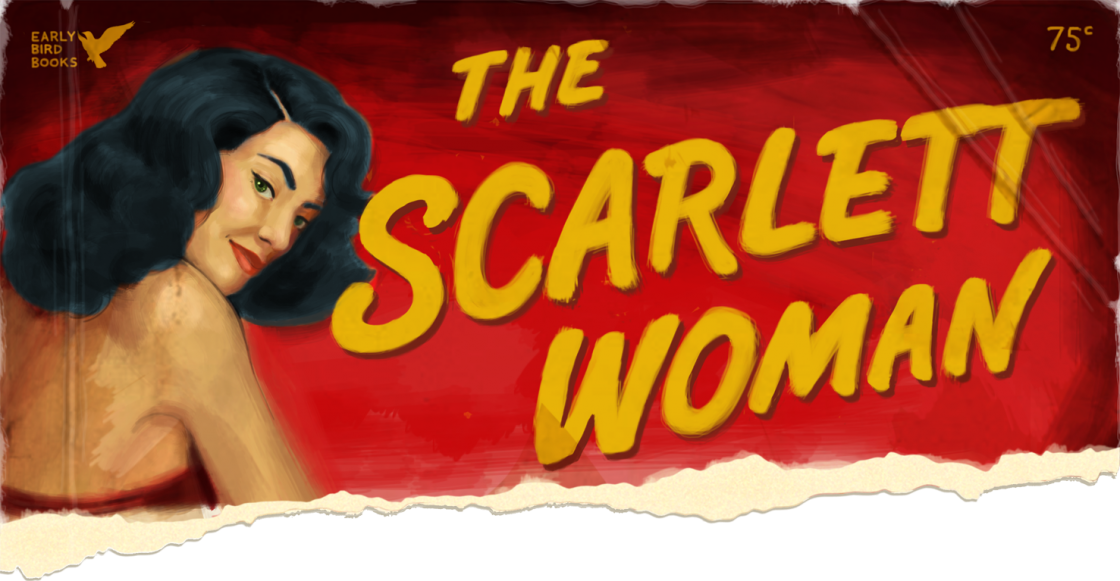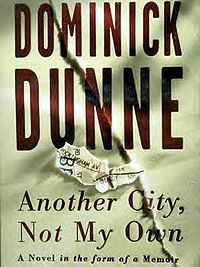Ever since reading Dominick Dunne’s Another City, Not My Own—a fictionalised account of his time spent chronicling the O.J. Simpson murder trial for Vanity Fair—a few years ago, I’ve been fascinated by the dark side of Hollywood. You know, the Tate–LaBianca murders, the Black Dahlia mystery, the strangulation murder of Dunne’s own daughter, Poltergeist actress Dominique, at the hands of her former partner… The list goes on.
Recent pop cultural products that tap into said fascination include The Black Dahlia novel and subsequent film, the Ryan Gosling and Emma Stone-helmed Gangster Squad, and the first season of American Horror Story, which renewed my interest in the macabre underbelly of Los Angeles and prompted me to book a Dearly Departed Tragical History tour of the city as well as visit the Museum of Death on Sunset Boulevard on a trip there a couple of years ago. (Warning: extremely graphic contents abound in the Museum of Death. I was so overwhelmed by the objects on display that I had to exit the gallery space, so only those with a strong stomach and dull imagination should give their patronage, as there are no refunds.)
Despite not being a fan of horror movies due to my overactive imagination, I somehow thought the Museum of Death was a good idea. After all, they had crime scene and autopsy photos of Nicole Brown Simpson and JFK, respectively, among other morbid memorabilia such as serial killer artwork and letters, which I do have an interest in. But the Museum of Death also houses the decapitated head of the Bluebeard of Paris, graphic images of bodies in various stages of death, and an effectively frightening layout that saw me having to leave after ten minutes. The overwhelming watermelon-scented cleaning products that seem to be favoured by much of America’s hospitality and tourism industry and that wafted through the museum elicited in me an aversion to the aroma. It just so happens that watermelon-flavoured gum is also my sister’s breath freshener of choice and now whenever she’s chewing my heart races, I start to perspire and I feel a headache coming on. Sisters: they really know how to push your buttons.
When my companion was done touring the museum while I sweated my anxiety out and chatted to the proprietors in the gift shop, she escorted me back through to the Hollywood section, much of which I’d already seen online and was prepared for, with my eyes closed lest I happen upon something grisly and be (further) scarred for life. Having recently read prolific filmmaker, actor and author Kenneth Anger’s Hollywood Babylon, which delves further into famous Tinseltown deaths, prior to my visit I recognised many of the objects on display at the museum as being donated by him.
When it comes to Anger, though, some might argue that certain details in his books are fabricated. The following day, on the Dearly Departed Tragical History tour, it was alleged that when destitute actress Marie Prevost was found dead in her apartment of acute alcoholism in 1937, her body was not partly eaten by her dachshund, as Anger wrote, but that the pet was merely trying to rouse its master by nipping at her. It is true, however, that an IOU for $110 to Joan Crawford, who ended up paying for Prevost’s funeral, was among some of her belongings. In the wake of Prevost’s death, the Motion Picture and Television Country House and Hospital was set up to prevent similar fates for others in the industry. Speaking of stars forking out for their peers funerals, it emerged on the tour that Frank Sinatra was quite generous when it came to interments. He ensured that Bela Lugosi, who played the original Count Dracula, Judy Garland and Sammy Davis Jr. were all given fitting farewells in the wake of their troubled demises.
It is also alleged by Hollywood historians, most recently Jackie Ganiy in Tragic Hollywood: Beautiful, Glamorous, Dead, that Anger’s account of Lupe Velez passing out and drowning in her toilet bowl is trademark Anger sensationalism. It is more likely that Velez died making her way from her bed, where she ingested hundreds of Seconal pills in a suicide attempt, to the bathroom upon her body rejecting the overdose. This theory was cemented in with the first publication of Velez’ crime scene photos in the 2012 book Beverly Hills Confidential: A Century of Stars, Scandals and Murders by Barbara Schroeder and Clark Fogg.
Another Hollywood legend that’s seemed to gain traction despite its unknown origins is death by jumping off the Hollywood sign. In actual fact, as pointed out by Dearly Departed tour guide Brian (but is also easily found in many a Hollywood history exposé), Peg Entwistle was the only person to ever have committed suicide-by-Hollywood-H in 1932.
Entwistle was a Broadway star who migrated West to make it in the movie business. She married fellow actor Robert Keith who neglected to mention he’d previously been married, a union which produced a son, Brian Keith. Entwistle’s unwitting stepson would go on to star in the original Parent Trap and TV series Family Affair. Another tragic young suicide would haunt Brian in his later years, though; his daughter committed suicide in 1997 at the age of twentyeight using a gun he gave her. Brian, suffering from lung cancer, emphysema and grief, would use this same gun to end his life two months later.
Tour guide Brian made mention of this family curse as we drove through Hollywood, but the only other reference I could find comes from James Zeruk, Jr.’s book, Peg Entwistle & the Hollywood Sign Suicide: A Biography.
In addition to the marital abode of Marilyn Monroe and Joe DiMaggio; the “Nightmare on Elm Drive” property, as Dunne so accurately wrote in an account for Vanity Fair, where the wealthy Jose and Kitty Menendez were slain by their own sons, Lyle and Erik; “the cheapest house in Beverly Hills”, as Brian put it, previously owned by American Idol’s Simon Cowell; and Johnny Depp’s secluded abode overlooking Sunset Boulevard, another house featured on the tour was that in which Lana Turner’s teenaged daughter (allegedly) stabbed to death Turner’s lover, mobster Johnny Stompanato, during a domestic dispute in 1958. It is widely believed that Turner was the one who committed the crime but the star reasoned that no jury would convict a young girl endeavouring to protect her own mother. Dunne, in his pictorial memoir, The Way We Lived Then: Recollections of a Well-Known Name Dropper, writes that he lived around the corner from Turner when the murder took place. As we drove past this Beverly Hills property whose history helped form the bedrock of Hollywood’s golden age, I eerily noticed children’s toys and bikes strewn across its front yard. I wonder if the current owners are aware of the debauchery and tragedy that occurred in their family home years earlier?
Speaking of, a suite of homes even the shrewdest real estate agent would have trouble moving happens to be situated across the street from Lea Michele’s modest pad and only blocks away from where I stayed during my vaycay.
In 2004 screenwriter Robert Lees, best known for his work on Lassie, Alfred Hitchcock Presents and with Abbott and Costello, was decapitated by a drug-addled, breaking-and-entering homeless man Kevin Lee Graff in his home on Courtney Avenue at the age of ninety-one. The horror story doesn’t end there, though: Graff then took Lee’s severed head and entered the neighbouring residence of Morley Engleson and murdered him before stealing his car to make a getaway. The following day Graff was noticed by guards at the entry to the Paramount Pictures lot due to his erratic behaviour and was picked up by police. He is currently serving two life sentences without the possibility of parole.
Brian also cruised by famed Mexican eatery, El Coyote, which isn’t so much known for its food as its clientele. Its biggest claim to fame is that Sharon Tate’s last meal was eaten there before her murder by the Manson Family. But after eighty years of service, there must be something else about the place that keeps ’em coming back. (It was at this point on the tour that I found out I don’t just dislike coriander [or cilantro, its Mexican derivative]; I’m allergic to it, as is tour guide Brian. The allergic reaction manifests itself as a soapy or metallic taste when consuming the herb. You learn something new every day!)
The apartment building where budding ingénue Rebecca Schaeffer was shot dead by a stalker in 1989 is located in the Fairfax district of L.A., also the home of the famed outdoor shopping mall and celebrity hangout The Grove. After hearing the story of how overzealous fan, Robert Bardo, obtained Schaeffer’s address from the Department of Motor Vehicles by paying just $1 to access their records, we stopped at The Grove to revive our blood sugar and relieve our bladders. Laws have since been put in place to prevent such access to DMV records.
It wasn’t all doom and gloom behind the scenes of the golden age of Hollywood, though: when Mae West’s landlord at the exclusive Ravenswood apartment complex barred her boxer boyfriend, Gorilla Jones, from the premises because he was black, she bought the whole building and abolished his ruling! Fun fact: the current phone number for residential enquiries is the same number that was listed as West’s in the phone book way back when, before her death in 1980.
Unless you include TMZ presenter David House, who gave an intimate tour of Hollywood’s hotspots to myself, my friend April and two other patrons on my first rainy day in L.A., and a former World Wrestling Entertainment Superstar I’d met through friends earlier that year, I didn’t encounter any celebrities in Tinseltown. Dearly Departed tour guide, Brian, wagered that the most opportune time to get up close and personal with your favourite celebs is Halloween: hire a car, bring your kids or borrow someone else’s, get gussied up and go trick or treating in Beverly Hills. As door knocking in the neighbourhoods featured in Star Maps is illegal every day except October 31st, All Hallows Eve not only blurs the line between the living and the dead, it blurs the line between the famous and the non-famous.



